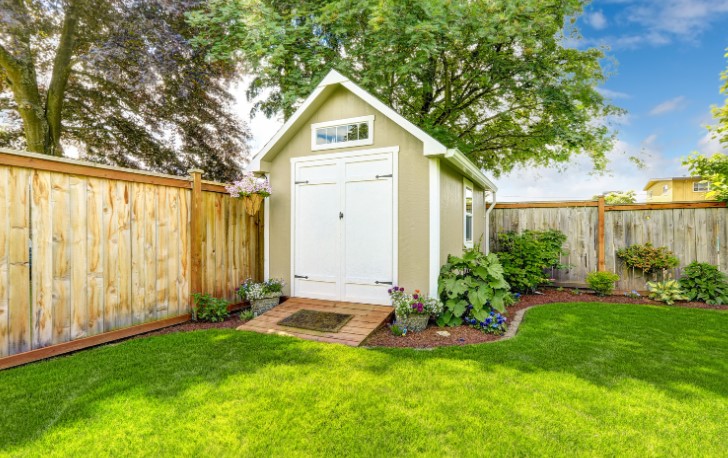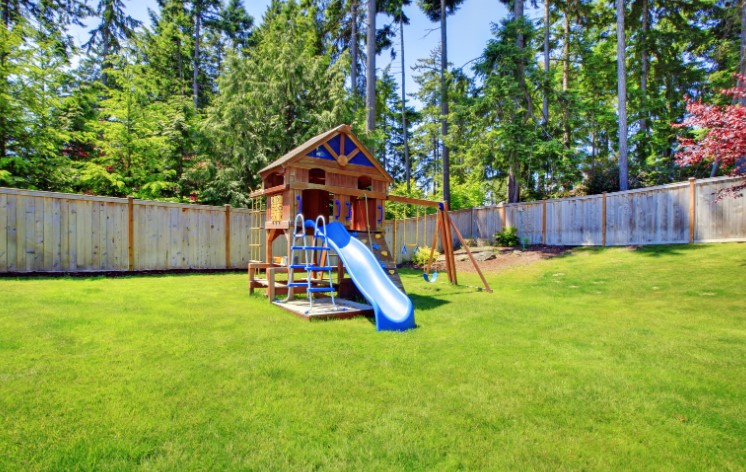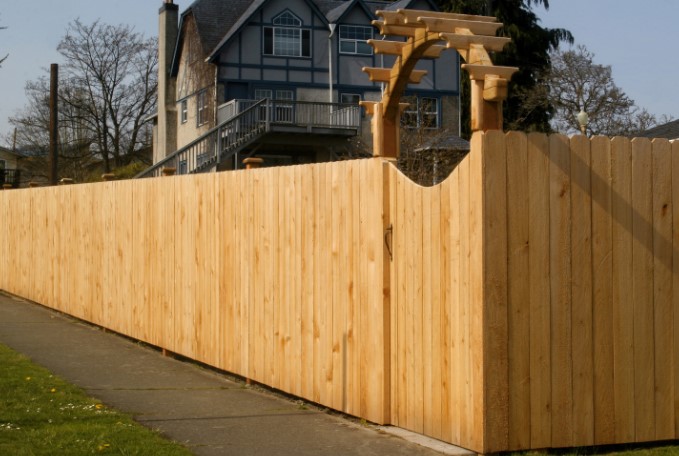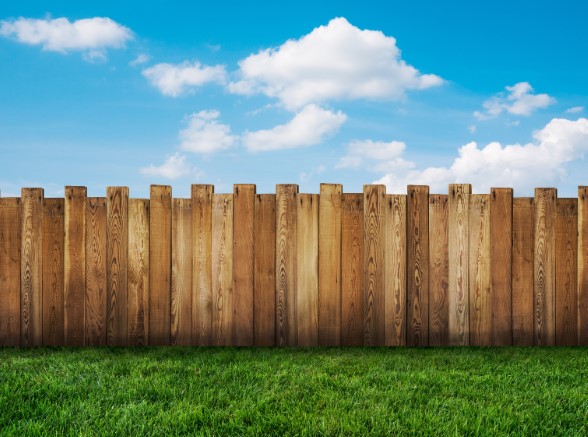Over time, wooden fences are prone to developing green algae, especially in damp or shaded areas. This not only makes the fence look unkempt but can also lead to wood deterioration, slipperiness, and potential rot if left untreated.
If you’re noticing green patches on your wooden fence, don’t worry—there are several effective ways to remove algae and restore your fence to its original condition. In this guide on how to remove green algae from a wooden fence, I’ll walk you through:
- What causes algae on fences
- DIY and commercial cleaning solutions
- The best methods to remove algae
- How to prevent algae from coming back
By following these step-by-step instructions, you can keep your wooden fence clean, well-maintained, and algae-free for years to come.
What Causes Green Algae on Wooden Fences?
Algae thrive in moist, shaded, and poorly ventilated areas. If your wooden fence is exposed to frequent rain, has limited sunlight, or is close to overgrown plants, it becomes a prime location for green algae growth.
Here are the main factors that contribute to algae on fences:
- Damp Conditions: Rain, high humidity, or poor drainage can create excess moisture.
- Lack of Sunlight: Fences that are shaded by trees, buildings, or other objects are more prone to algae buildup.
- Poor Air Circulation: Limited airflow prevents wood from drying out properly.
- Organic Debris: Leaves, moss, and soil deposits on the fence can trap moisture and encourage algae growth that too on the taller fence which is extended.
Unlike moss or mildew, algae do not have roots and do not feed on wood, but their presence retains moisture, leading to fungal growth and potential wood rot over time.

Best Methods on How To Remove Green Algae from a Wooden Fence
Method 1 – Cleaning Green Algae Off Wood with Vinegar
One of the most effective and eco-friendly ways to remove algae is by using white vinegar. Vinegar is a natural disinfectant that kills algae without damaging the wood.
What You’ll Need:
- White vinegar (undiluted for heavy algae, 50/50 mix with water for lighter growth)
- Spray bottle or bucket
- Stiff-bristle brush
- Water hose
Step-by-Step Instructions:
- Spray or apply the vinegar solution directly onto the green algae patches.
- Let it sit for 20-30 minutes to break down the algae.
- Scrub the area using a stiff-bristle brush to remove the algae.
- Rinse the fence thoroughly with clean water.
- Allow the fence to fully dry before applying any protective sealant.
This method is safe, non-toxic, and does not harm nearby plants or pets.
Method 2 – Using a Commercial Algae Remover
For tougher algae stains, commercial algae removers can be more effective than DIY methods. These solutions are specially formulated to break down algae without harming wood.
Best Algae Removers for Wooden Fences:
- Wet & Forget Moss, Mould, Lichen & Algae Remover
- Algon Organic Path & Patio Cleaner
- Ronseal Decking Cleaner & Reviver
How to Use a Commercial Algae Remover?
- Follow the instructions on the product label.
- Apply the solution using a sprayer, sponge, or brush.
- Allow the cleaner to sit for the recommended time (usually 10–30 minutes).
- Scrub if necessary, then rinse with water.
Most commercial cleaners offer long-term algae prevention, meaning you won’t have to clean as often.

Method 3 – Pressure Washing a Wooden Fence
If your fence has a large amount of algae, using a pressure washer can quickly restore its appearance. However, high-pressure water can damage wood, so it’s important to use the right settings.
Pressure Washing Instructions:
- Use a low-pressure setting (no more than 1500 PSI) to avoid damaging the wood.
- Start at a distance of 12-18 inches from the fence.
- Spray evenly in a sweeping motion, working from top to bottom.
- Let the fence dry completely before applying a wood preservative.
Warning: Avoid using a high-pressure setting, as it can strip away wood fibers, leading to splintering and damage.
Method 4 – Homemade Algae Remover for Fences
If you prefer a chemical-free approach, you can make a DIY algae remover using household ingredients.
DIY Algae Cleaning Solution:
| Ingredient | Measurement | Purpose |
| White vinegar | 1 part | Natural algae killer |
| Baking soda | ½ cup per litre of water | Gentle scrubbing agent |
| Lemon juice | 2 tablespoons | Helps break down algae naturally |
| Water | 2 parts | Dilutes solution |
How to Use?
- Mix the ingredients in a bucket or spray bottle.
- Apply to the affected areas.
- Let sit for 20 minutes, then scrub with a brush.
- Rinse thoroughly with water.
This eco-friendly solution is safe for use around plants and pets.
How to Prevent Green Algae from Growing on a Wooden Fence?
Regular Cleaning and Maintenance
- Wash your fence every 6–12 months to prevent algae build-up.
- Remove leaves, soil, or moss that can trap moisture.
Improve Airflow and Sunlight Exposure
- Trim back trees and bushes to increase airflow around the fence.
- Allow more sunlight to reach the wood, reducing damp conditions.
Apply a Wood Treatment and Sealant
- Use a water-resistant sealant to protect the wood.
- Consider oil-based treatments for better longevity.
Install a Gravel or Stone Barrier
- Add gravel or stones at the base of the fence to reduce soil moisture contact.
- This helps keep the lower sections of the fence dry and algae-free.

Conclusion
Removing green algae from a wooden fence is a straightforward task when using the right methods. Whether you choose vinegar, a commercial cleaner, pressure washing, or a homemade solution, regular cleaning will help maintain the beauty and longevity of your fence.
For long-term protection, keep your fence dry, allow airflow, and apply a wood sealant. By following these steps on how to remove green algae from wooden fence, you can enjoy a clean, algae-free fence all year round.
Would you like recommendations on the best wood treatments for long-term fence protection? Let me know!
Related Article: Cheap Fencing To Keep Dogs Out Of Garden & Best 10 DIY Ideas
FAQs About Removing Green Algae from Wooden Fences
1. Can I use bleach to remove green algae?
Yes, but dilute it properly (1 part bleach to 4 parts water) to avoid damaging the wood. Always rinse thoroughly afterward.
2. Will algae damage my wooden fence?
While algae doesn’t eat wood, it retains moisture, which can lead to mould, mildew, and eventual rot.
3. How often should I clean my wooden fence to prevent algae?
At least once or twice a year, ideally in spring and autumn.
4. Is pressure washing safe for old fences?
It depends. Older fences may be weaker and prone to damage, so use low-pressure settings or hand-cleaning methods.


0 Comments